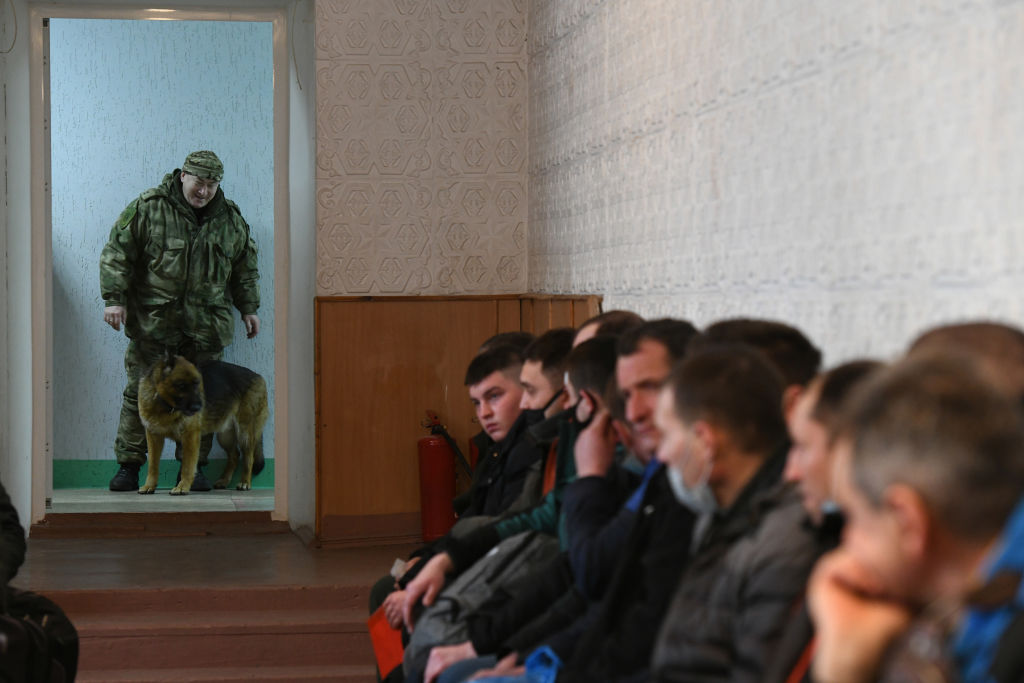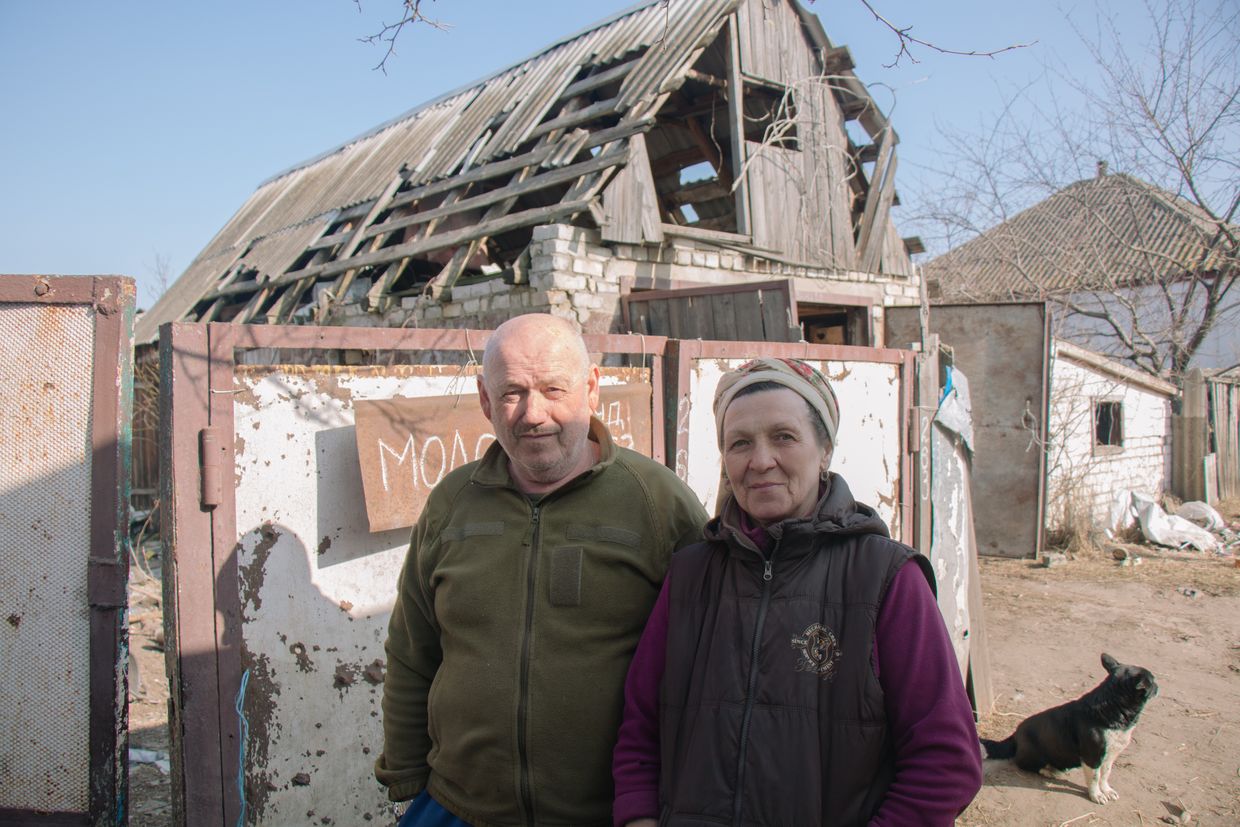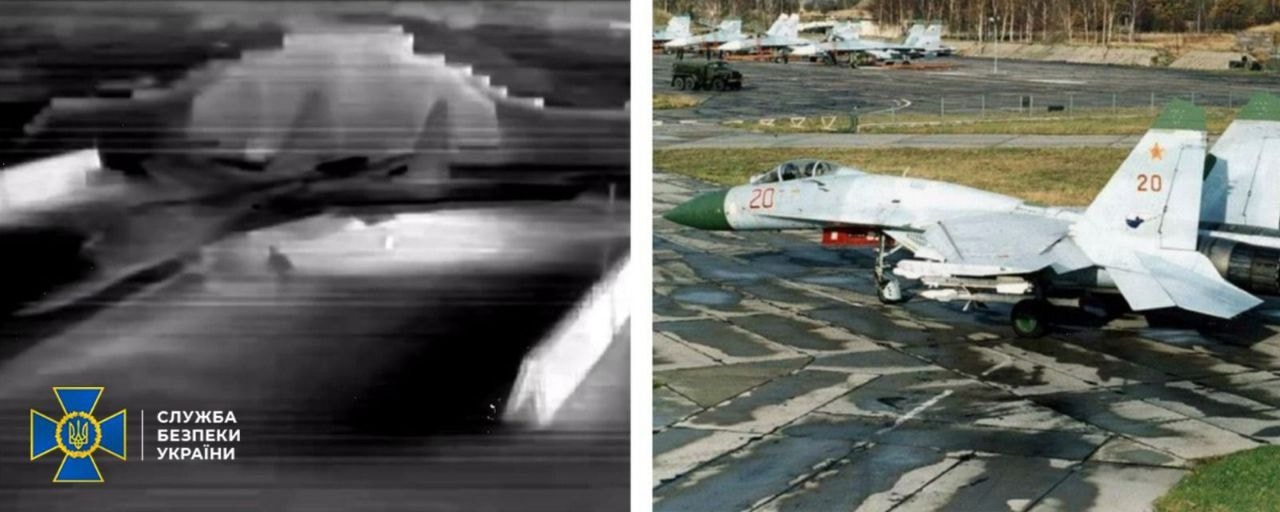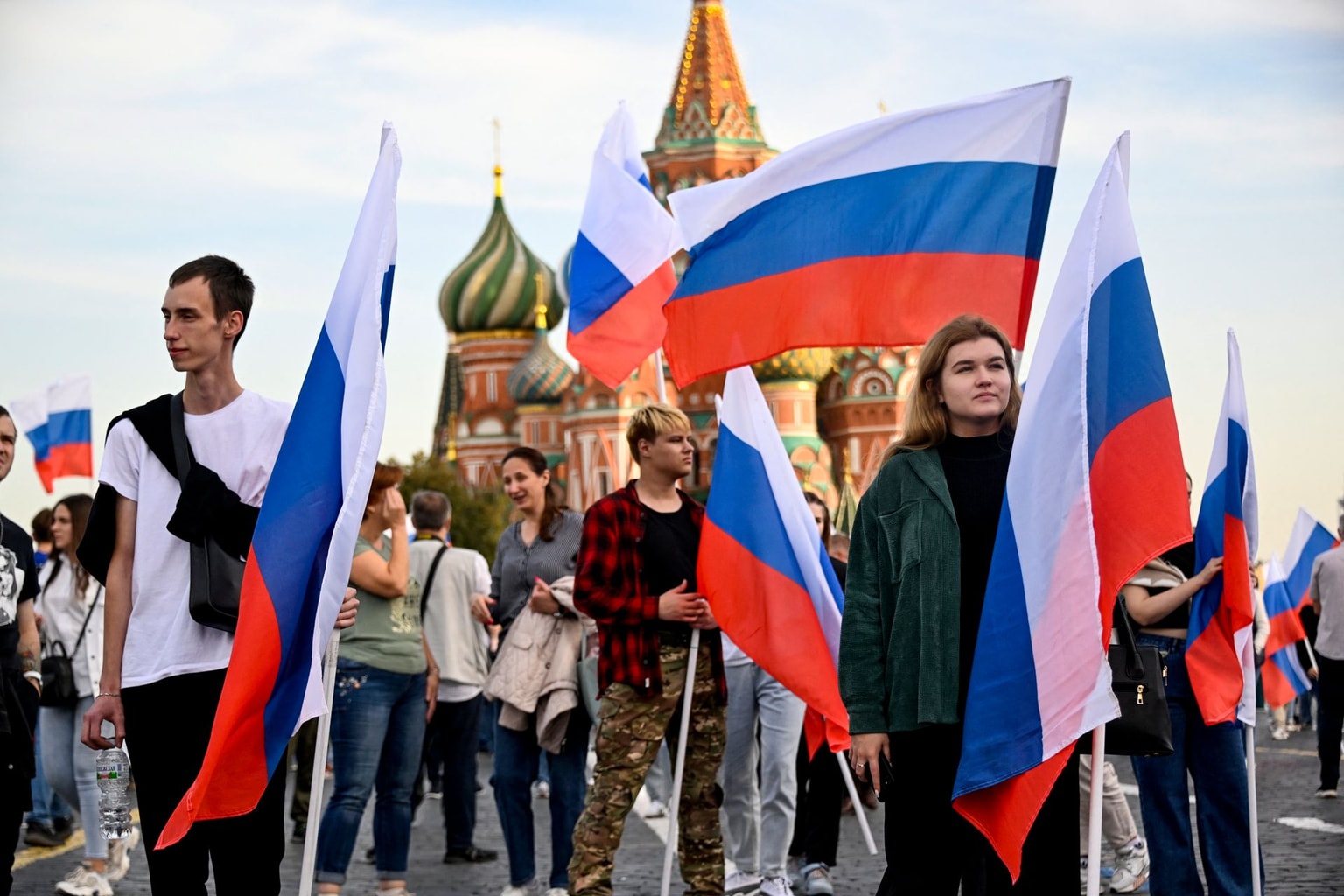
'No region in Ukraine endures hell like Donetsk Oblast,' governor says of Russia's war
A local resident walks past apartment buildings destroyed by air bomb in the village of Ocheretyne not far from Avdiivka town in the Donetsk region, on April 15, 2024, amid the Russian invasion in Ukraine. (Anatolii Stepanov/AFP via Getty Images)
Local authorities in Ukraine’s eastern Donetsk Oblast have stopped assessing the damage of Russia’s war. Daily barrages of attacks make doing so both futile and extremely dangerous.
Russian forces launch up to 2,500 attacks daily at the embattled region’s towns and villages located along 165 miles of the front line, according to Donetsk Oblast Governor Vadym Filashkin.
“The entirety of Donetsk Oblast is under heavy fire. Even in rear cities, the enemy has been striking people with guided aerial bombs,” Filashkin told the Kyiv Independent in an interview.
Nowhere in Ukraine is louder today than eastern Donetsk Oblast, which Russia has swarmed with its forces and military hardware since Februrary 2022 and even before after its troops invaded part of the region in 2014.
Russian forces use all types of conventional weapons in the region, ranging from hand grenades to ballistic missiles, gliding bombs, and heavy flamethrower systems, considered to be one of the strongest non-nuclear weapons ever developed.
The situation on Ukraine's eastern front has significantly worsened due to a lack of ammunition plaguing the Ukrainian military. Russia has intensified its offensives along the Lyman, Chasiv Yar, and Porkovsk axes for further advance towards key cities like Kostiantynivka, Kramatorsk, and Sloviansk.

The Kyiv Independent spoke with Filashkin about the difficulty in evacuating civilians in front-line areas, building up fortifications to prevent further Russian advances, and the devastation the war has wrought on Ukraine’s once-industrial powerhouse of a region.
Exodus
Every tenth Ukrainian of the country’s estimated pre-war population of over 40 million lived in Donetsk Oblast before Russia first invaded Ukraine in 2014. The whole region is now a ghost town.
“Before the full-scale war, 1.9 million people were residing in (Ukrainian-controlled parts of) Donetsk Oblast. Now it's up to 525,000. Around 70% of those staying are women and elderly,” said Filashkin, a Mykolaiv-born official appointed in late 2023 after a four-year stint as deputy governor.
Despite controlling 60% of the region, Russia illegally annexed Donetsk Oblast along with Luhansk, Zaporizhzhia, and Kherson oblasts in the fall of 2022. It is unclear how many Ukrainians reside in Russian-occupied areas as many fled through Russia — the only way to escape the occupied area — either settling there or moving through it to get to mainly European countries.
Ukraine and Russia offer starkly contradicting accounts. Kyiv has said roughly 300,000 people resided in the occupied areas of Donetsk Oblast as of summer 2022, while Moscow claimed the population exceeded 2.5 million.

The governor said that the authorities are still trying to evacuate roughly 70,000 civilians, including 2,000 children, that remain on the front lines in the oblast.
“There has been mandatory evacuation of Donetsk Oblast’s entire population, and forced evacuation from the (front-line) Torеtsk, Marinka, and Ocheretyne communities,” Filashkin said, adding that authorities also launched a forced evacuation of 24 kids from four settlements in the Kurakhove community.
“We call on people to evacuate. Our goal is saving lives.”
Daily Russian attacks often result in casualties. A total of 1,930 people have been killed in Donetsk Oblast since February 2022, and 4,808 others have been injured, according to the governor.
The actual casualty numbers are expected to be much higher as it’s currently impossible to calculate casualties in Russian-controlled Volnovakha and Mariupol, a port city largely destroyed during a months-long siege.
The local authorities, the White Angels units of Ukraine’s National Police, and emergency servicemen evacuate locals from red-zone — high-risk areas — while the military steps in when “the situation becomes very difficult,” said Filashkin.

While the majority of internally displaced locals — over 500,000 people — moved to safer places within the region since 2014, now, everyone heads even further westward. Filashkin said Donetsk Oblast Military Administrations established dozens of humanitarian hubs in 17 regions across Ukraine.
“As soon as people step off the (train), they get financial aid. Then the receiving (region) takes care of their accommodation and provides assistance,” said the governor.
However, there are those who want to stay home in the front-line towns while Russian forces get closer. Delaying the decision to evacuate may result in death or life under occupation.
“Few people (among those who stay) want to evacuate. This is an issue for us. When things get really hot, people will request help, but it may be impossible to reach them,” Filashkin said, recounting that several locals sought evacuation from besieged Avdiivka and Russian forces fired on the only escape route.
Destruction
Russia’s war is ubiquitous in Donetsk Oblast with many places lying in ruins resembling spitting images of World War II.
“Marinka is completely destroyed, Vuhledar barely exists. There are many such places along the front line. Bakhmut and Avdiivka are almost gone. Lyman, Toretsk, Niu Iork, and the Ocheretyne community are 80% destroyed, Krasnohorivka is 70-80% destroyed,” said Filashkin.
Daily barrages make it nearly impossible to assess the true extent of the devastation, let alone embark on large-scale reconstruction efforts. Local authorities have only been able to count a fraction of the housing destruction.

The governor said Russia’s war has destroyed and damaged at least 116,000 residential buildings, including over 7,000 high-rise apartment blocks. Repair works are swiftly carried out, prioritizing essential power lines and running water, shattered windows, and patching up rooftops where people still reside.
“Now, 70 settlements near the front line are without electricity. Energy workers try to do everything possible to restore power and water supplies to people after each enemy shelling," Filashkin said.
A thorough assessment of the damage to the region's heavy industry, which previously accounted for about 20% of Ukraine's industrial output, has yet to be conducted. However, the industrial outlook is bleak as all major plants and factories are destroyed and corroding in the open air.
“No big business left in Donetsk Oblast, unfortunately. Large enterprises have been almost completely destroyed. There is little left of the coal industry. Only small and medium-sized businesses remain,” said Filashkin.
Despite the destruction, the governor remains optimistic about post-liberation reconstruction in the region, foreseeing the emergence of new plants, factories, and infrastructure.
Fortifications
The only big construction underway in Donetsk Oblast so far is fortifications built up to hinder the Russian offensive.
Ukraine is building 1,240 miles of fortifications across three lines of defense, President Volodymyr Zelensky announced on March 11.
While he wouldn’t say how long the defensive lines in Donetsk Oblast are exactly, Filashkin says they are within proximity to the Russian forces.

“We have a very small distance from the enemy there. Why? We’ve pushed the third defense line as close as possible to the second because we want to hold onto every piece of our land,” said the governor.
Filashkin says the regional military administration also aims to save the lives of construction workers, who “work constantly,” as the Russian forces often target the second and third defensive lines. He didn’t specify how.
The governor also said the fortifications are reinforced with installed concrete and wooden dugouts, trenches, and other non-explosive barriers.
“The enemy did not advance further because our guys had a place to settle down,” said Filashkin.
He declined to divulge further information on fortification construction, citing the threat of gliding bomb attacks targeting construction sites.
“Donetsk Oblast is very dangerous… Thank God, no region endures the same hellish experience as Donetsk Oblast.”














